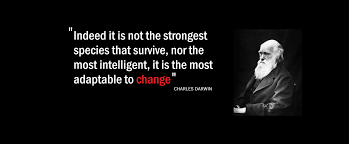In the last 6 months we have seen momentous decisions made by electorates in Britain and the US that should have created certainty but have actually done the opposite.
In the US, we have just witnessed the election of Donald Trump as President and regardless of what you may or may not think of him, nobody actually knows what he is going to do.
In the UK, a decision was made to reject European Union and to leave the EU in #Brexit. Or was it? – nobody knows. There are high court cases examining decisions, negotiations may or may not be taking place with 27 member nations and in general the average Brit on the street has no idea as to what the future holds. #Brexit has created uncertainty in the world’s largest economic block.
Now if there is one thing that is certain about uncertainty it is that change is on the way and in business, change can result in positive outcomes and growth – if it is managed well.
Fear of the unknown is normal and can accompany any significant change, it can cripple a business or it can usher in a period of significant growth. Thankfully at Brackenway we don’t deal with the fear of change in the leadership of the free world, the exiting of a major economy from a an economic super bloc or control of nuclear codes.
We specialise in commercial management of construction projects and there are simple processes that can be followed to effectively deal with change and control risk that don’t involve upping sticks and moving country.

The place to start is with a clearly planned Change Management Process:
- Identify and record the change – Some changes are not as obvious as a change of President so it is important to be vigilant – check all issued document revisions – particularly drawings or emails that may have bypassed the main server.
- Timely notification of the change – if you have not accepted the risk of the change in question (see below) most contracts require formal notification of the change to the risk owner so that they have the opportunity to decide what they want to do about it (increasingly such notice within a defined period of time is a prerequisite to being compensated for the change – even if that change is as obvious as badly fitting hair piece!).
- Communicate the change – ensure relevant people within the project team are aware of what has changed and can take appropriate action / advise impacts.
- Quantify and notify the impact of the change – estimate how much the change will cost and just as importantly, what effect it will have on the time required to complete the project.
- Notify the risk owner – include as much supporting information as is possible (again time limits will usually apply).
- Re-evaluate project risks – the change may have increased or reduced existing project risk requiring adjustment to mitigation strategies.

You will also require a solid Risk Management Process:–
- Identify all project commercial risks – this should happen as early as possible in the project cycle as it will increase the options available for dealing the risk – including a tactical withdrawal from the bidding process.
- Analyse each risk – this is to determine the likelihood of it happening (don’t rely on others to inform you) and what effect it will have if it does happen – remember some risks may seem very unlikely but if they occur they can have a significant impact.
- Rank the risks by magnitude (combination of likelihood and consequence) – this will help you to decide whether you can accept the risk or you need to do something to make it acceptable.
- Treat unacceptable risks – this can involve qualifying a contract or insuring the risk so that risk passes to another party, allowing money in the tender so you are not out of pocket if the risk occurs or developing strategies to reduce the likelihood or consequence of the risk.
- Monitor and review the risks – what seems unthinkable and irrational today can become common tomorrow – just ask David Cameron or Hilary Clinton. It is important to constantly review the project risks you face so that you are as prepared as you can be for both the known unknowns and unknown unknowns.
For more information or assistance with project commercial risk and change management please contact Brackenway Consulting. (Concerned Brits and Americans on the other hand can find useful information here).
